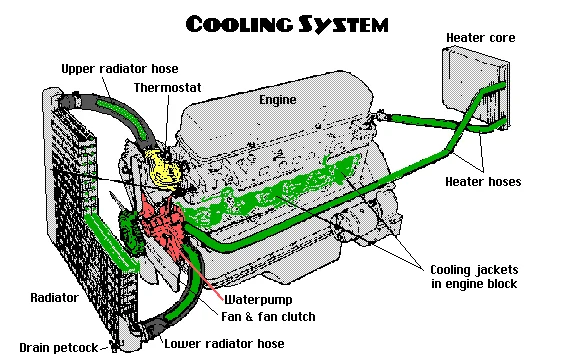In this post, we’ll look at what symptoms to look for to know when an ATV is overheating, the most common causes for overheating problems, and what you can do to prevent it from happening.
Page Contents
When an ATV begins to overheat, it will give you various warning signs that tell you something is not quite right.
By knowing what signs to look out for, you are more likely to become aware of a potentially harmful issue before it has a chance of causing permanent damage.
It is vital to pay extra attention in riding situations where the ATV is extra prone to overheating, such as when:
Here are some typical signs and symptoms that may indicate the ATV is starting to overheat.
Most ATVs have a lamp that will flash or turn on to indicate an overheated engine. A sensor mounted on the cylinder monitors the engine’s temperature and activates the light when it reaches a set value.
If your high temp light turns on, but all systems seem to be working as usual, and you don’t find any other signs of overheating, you may only have a bad sensor.
Modern ATVs will automatically reduce engine power whenever an overheating issue lasts for more than a short period.
As the engine temperature rises, the viscosity in oils and other fluids decreases (thins), pressure increases, and metal parts may start warping, causing leaks. If you notice fluids dripping from underneath the ATV, it’s a sign that things are getting way too hot.
That’s right; you will likely feel when the engine is becoming warmer than usual. After all, you sit with the engine in between your legs.
You usually won’t be paying attention to the engine temperature consciously, but your body will still pick up when there is a change and something doesn’t feel normal.
Caution! Please do not touch the engine with your bare hands, as it may be scolding hot.
When engine temperatures get too hot, it may burn away oil meant to lubricate the engine’s internals. This may cause the engine to start making a ticking noise that speeds up as you rev the bike.
Coolant should not reach boiling hot temperatures in normal riding situations. It is boiling coolant coming from the radiator or a leak in a coolant hose if you steam.
Coolant contains sweet-smelling (but toxic) ethylene glycol. As it reaches boiling hot temperatures, it may start leaking out of the cooling system, releasing its maple syrup-like smell.
If you suspect that your ATV is starting to overheat, you should stop immediately and try to identify what is causing it. Prolonged overheating may cause permanent damage to the engine if left unaddressed.
Prolonged overheating may cause permanent damage to the engine if left unaddressed.
The key to preventing overheating damage is to catch it early, get the ATV cooled off, and fix whatever issue is preventing the bike from staying cool.
There are several stages of overheating. At the lower end of the scale, you have situations where the bike seems to run a bit hotter than usual, the fan may run more than you’re used to, but the temp never gets so high that the coolant starts boiling.
When things get so hot that the coolant boils, it’s definitely time to take a break to let things cool off. Boiling coolant usually won’t cause any damage as long as you catch it early.
The serious problem comes when you allow the coolant to keep boiling. The boiling coolant evaporates, gradually reducing the cooling system’s ability to keep the bike cool. As more coolant evaporates, the risk of severe damage increases.
Then there is the factor of what is causing the bike to overheat, where some issues are more prone to causing permanent damage than others.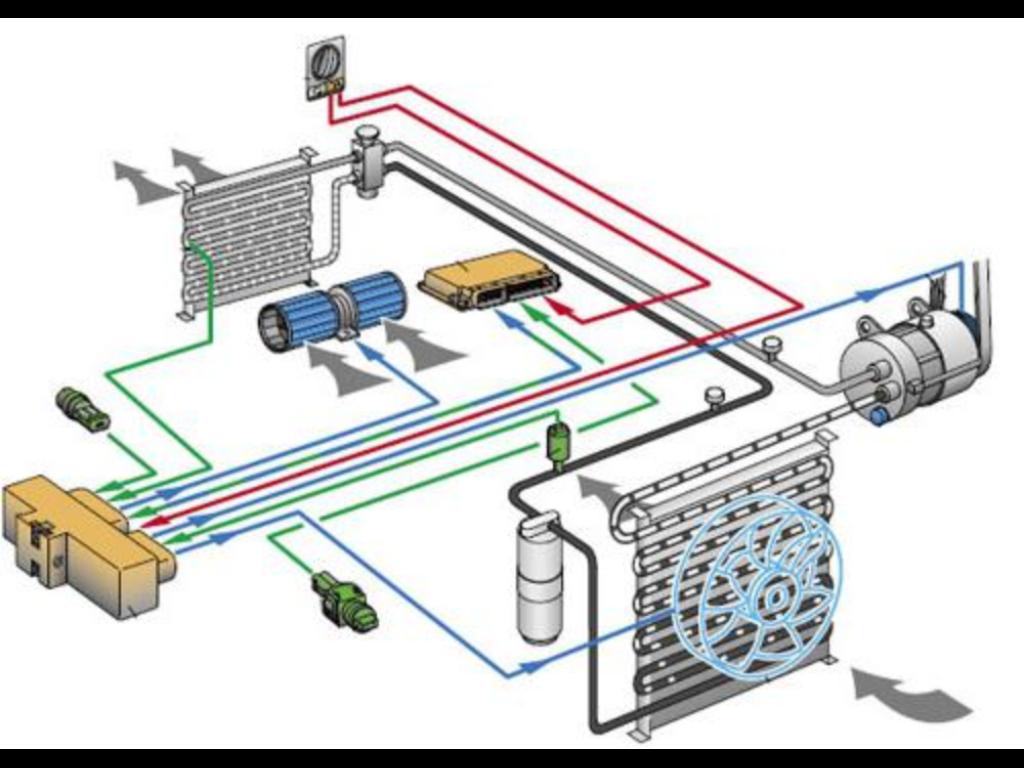
Overheating left unattended may cause damages to your ATV such as:
Hopefully, this general troubleshooting guide will point you in the right direction to better identify the underlying problem causing your ATV to keep overheating.
One or several of the issues listed below may be present. Your best bet is to start at the top as we begin with the most common ones with ATVs and those that are easiest and cheapest to fix.
A clogged or dirty radiator or radiator screen is likely the number one cause of overheating ATVs.
The radiator needs a constant flow of cool air for it to dispose of the engine heat properly. When mud and debris from off-roading, swamp riding, or dirt road riding get lodged in the radiator screen, it prevents the cold air from reaching the radiator.
The radiator fins may also get clogged with dirt, creating an insulating layer between the hot metal and the cool air.
Make sure also to inspect the back of the radiator as it is commonly overlooked. It doesn’t matter if the front is clean when the back is caked with mud and dirt.
The back side of the radiator is often overlooked when cleaning the ATV.This is how you properly clean your radiator to prevent overheating:
 Do not use a pressure washer if you can’t remove the screen as it may damage the radiator fins.
Do not use a pressure washer if you can’t remove the screen as it may damage the radiator fins.The thermostat is a heat-sensitive valve that regulates the flow of coolant through the cooling system. As temperatures begin to rise to a point where the engine needs more cooling, the valve will open to allow coolant to pass through the radiator.
Thermostats may get stuck due to corrosion.If the thermostat gets stuck in the closed position, the coolant will no longer pass through the system. Thermostats are considered consumables that tend to get stuck after a few years due to corrosion. Making sure you always run fresh, and high-quality coolant will reduce the risk of your thermostat corroding.
Making sure you always run fresh, and high-quality coolant will reduce the risk of your thermostat corroding.
Thermostats are cheap and easy to replace, as well as a common cause of engine overheating. Whenever you are faced with overheating issues, a thermostat replacement should be high up on the list.
The coolant fluid level needs to be within a specified range for the cooling system to work correctly.
On the side of the coolant reservoir tank (also known as the recovery bottle), you’ll find max and min marks, which indicate the correct coolant level. The coolant level should be within the maximum and minimum marks when the engine and coolant are cold.
The coolant level on this ATV is too low and should be tooped off with fresh coolant.Add more coolant according to the manufacturer’s recommendations if necessary.
It shouldn’t be necessary to regularly add more coolant as a bike in good mechanical shape won’t use or burn coolant under regular use.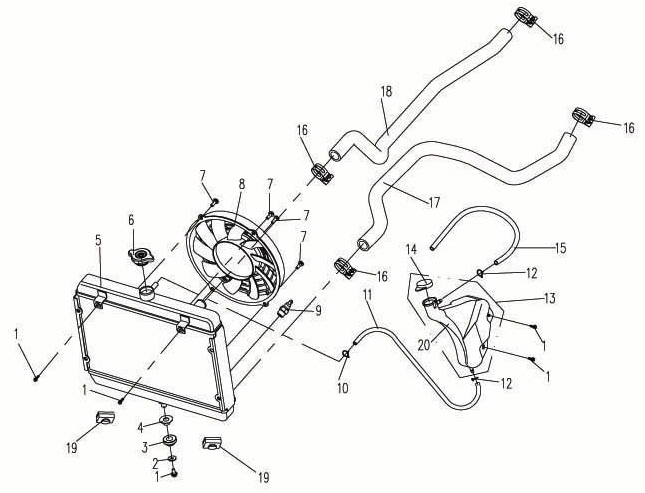 But to prevent possible overheating issues and other problems down the line, it’s always a good precaution to inspect the coolant level before each ride.
But to prevent possible overheating issues and other problems down the line, it’s always a good precaution to inspect the coolant level before each ride.
If the coolant is running low, you may suspect that there is a leak somewhere. Look for wet spots on your radiator, as they are a common source for leaks.
A mechanic will be able to pressure test the cooling system to identify where the leak is occurring.
Other possible places where you may find coolant leaks are:
Note 1: There won’t always be a large, clearly visible leak. Just a small leak with the occasional drop will be enough to drain the coolant below minimum over time.
Note 2: Coolant is not only used for its antifreeze and anti-corrosive abilities; it also prevents the water from evaporating. If you’re in a pinch and decide to use only water as a coolant, keep in mind that it will evaporate faster than when mixed with coolant.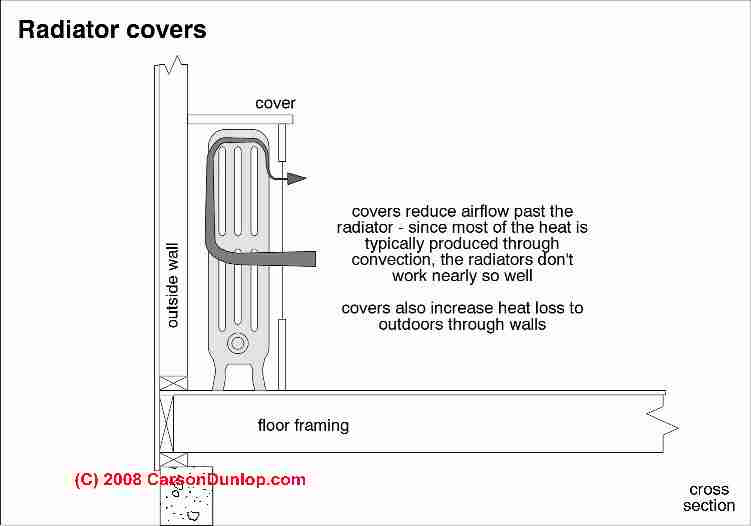
Coolant can go bad over time or lose some of its efficiency due to contamination.
It’s recommended that you completely drain the system and add a new coolant according to manufacturer recommendations every five years. This will ensure that the coolant maintains its ability to protect the engine.
After draining the old coolant, simply add fresh coolant through the radiator filler neck, using a funnel.Your user manual should specify what type of coolant to use and what distilled water/coolant concentration you should use on your bike. For optimal performance, you should typically use a 50/50 or 60/40 mix.
If the coolant mixture is off, it will negatively affect the bike’s ability to prevent overheating. Use an antifreeze tester to test your concentration, or if you are overdue on scheduled maintenance, do a complete system flush to add new coolant according to spec.
Most modern ATVs have a radiator fan that activates when the engine starts getting hot. Its job is to pull cool air across the radiator to improve its efficiency.
The fan can be either mechanical or electric, where the latter type is most common on ATVs.
A working fan makes an audible sound that can’t be missed when it kicks in. If your fan is not starting, you can test if it works by jumping the fan motor directly from the battery. This should start the fan motor instantly. Make sure you keep your hands at a safe distance from the spinning fan blades.
The fan clutch typically fails on a mechanical fan, where on an electrical fan, it’s the fan motor itself.
More common than a failed fan motor is a failed fan sensor, usually located near the radiator’s top or bottom. Some earlier models had the sensors minted in the center of the radiator. This little sensor tells the fan when to start and when to stop.
Your ATV needs a working charging system and a healthy battery for the radiator fan to work correctly (electrical fans).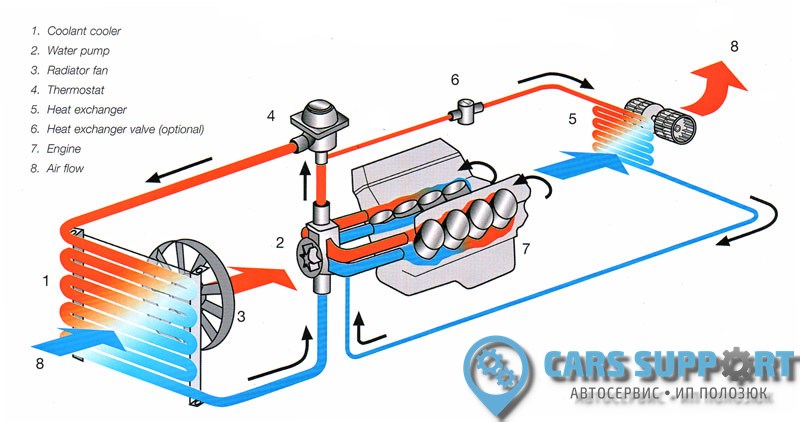 If your battery voltage is too low, it won’t have the power to run the fan motor, leaving the bike’s cooling system significantly less effective.
If your battery voltage is too low, it won’t have the power to run the fan motor, leaving the bike’s cooling system significantly less effective.
You will need a multimeter or voltmeter to check your battery and charging system.
When the ATV is running, you should get a reading of 14.0 to 14.5 volts when measuring on the battery. Any reading lower than this and the battery may not be able to power the fan.
There is a range of possible culprits to look into when your battery is not charging as it should.
The water pump aims to create a consistent flow of coolant through the ATV’s cooling system.
A set of rubber coolant hoses connects the radiator, coolant reservoir, and engine to form a closed cooling circuit. The water pump transfers hot coolant from the engine and over to the radiator, where it cools down before it gets pumped back into the engine again.
When the water pump fails, the hot coolant will not reach the radiator but remain in the engine.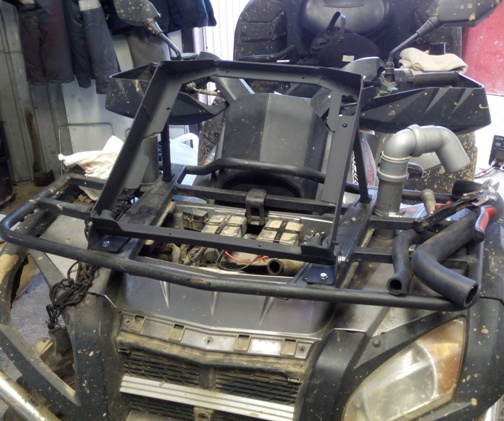 This can cause the engine to overheat.
This can cause the engine to overheat.
This is how to test if the water pump is working correctly:
If the pump does not work, it may be as simple as fastening an impeller nut that has come loose or replacing a cracked or chipped impeller. In some cases, there are leaks, wear, or corrosion to a level where the water pump needs to be replaced.
Trapped air pockets may prevent proper coolant flow throughout the cooling system. Some ATVs have a bleed screw on top of the head that needs to be bled after replacing the coolant.
Some ATVs have a bleed screw on top of the head that needs to be bled after replacing the coolant.
If the head gasket breaks, the coolant will enter the combustion chamber, where it will burn off or mix with the engine oil.
Depending on where the gasket has failed, you may or may not see water in the oil. The engine oil will turn to a caramel light brown when contaminated with coolant.
White exhaust smoke is a typical sign that water is entering the combustion chamber. You may even smell the sweet smell of burnt coolant.
In both cases, the coolant level will drop, effectively increasing the likelihood of the ATV overheating.
Other times exhaust gasses will enter the cooling system, resulting in air pockets trapped in the water pump, preventing proper coolant circulation. If you notice exhaust gasses in the coolant overflow tank, it’s a sure sign of a failed head gasket.
If you suspect you have a head gasket failure, you can test it by performing a compression test or, even better, a leak down test.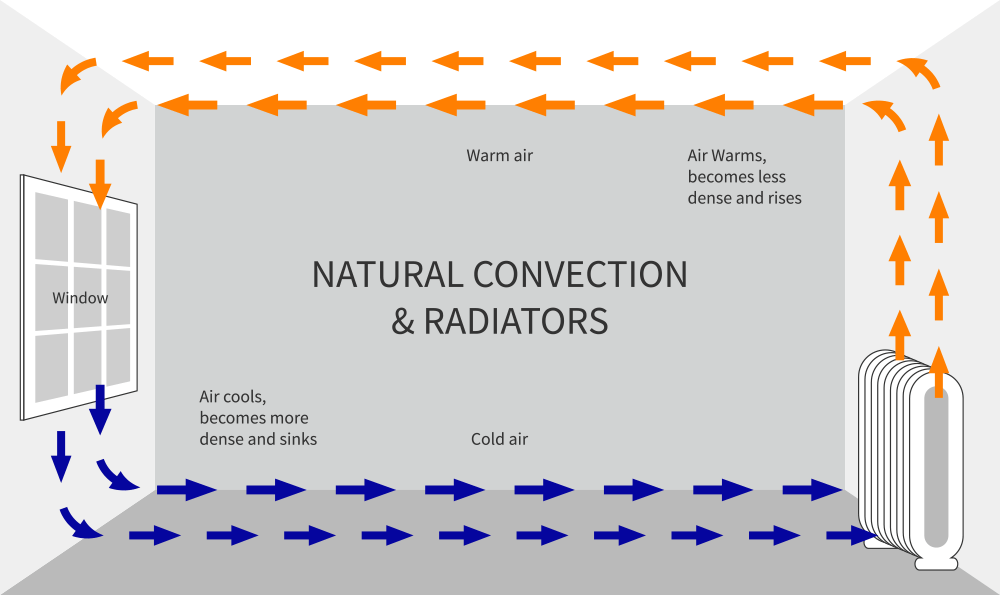
Do not drive with a blown head gasket as it can result in additional engine damage from overheating or reduced lubrication.
A radiator consists of a network of small tubes or canals containing the liquid antifreeze and a mesh of small cooling fins that maximize the surface area between the hot coolant and the cool air.
The cooling fins are fragile and may get damaged from dirt getting lodged between them or spraying them aggressively with a pressure washer.
A radiator with too many damaged cooling fins will not be as efficient as it may need to be, leaving the ATV to overheat sooner than usual.
A carb that is not set up correctly, with a too lean fuel/air mixture, may cause the bike to run hotter than usual.
So may a valve timing that is off, valves that are too tight, as well as using incorrect spark plugs.
An engine running hotter than usual is more prone to overheating as you start adding load or running it in hot climates.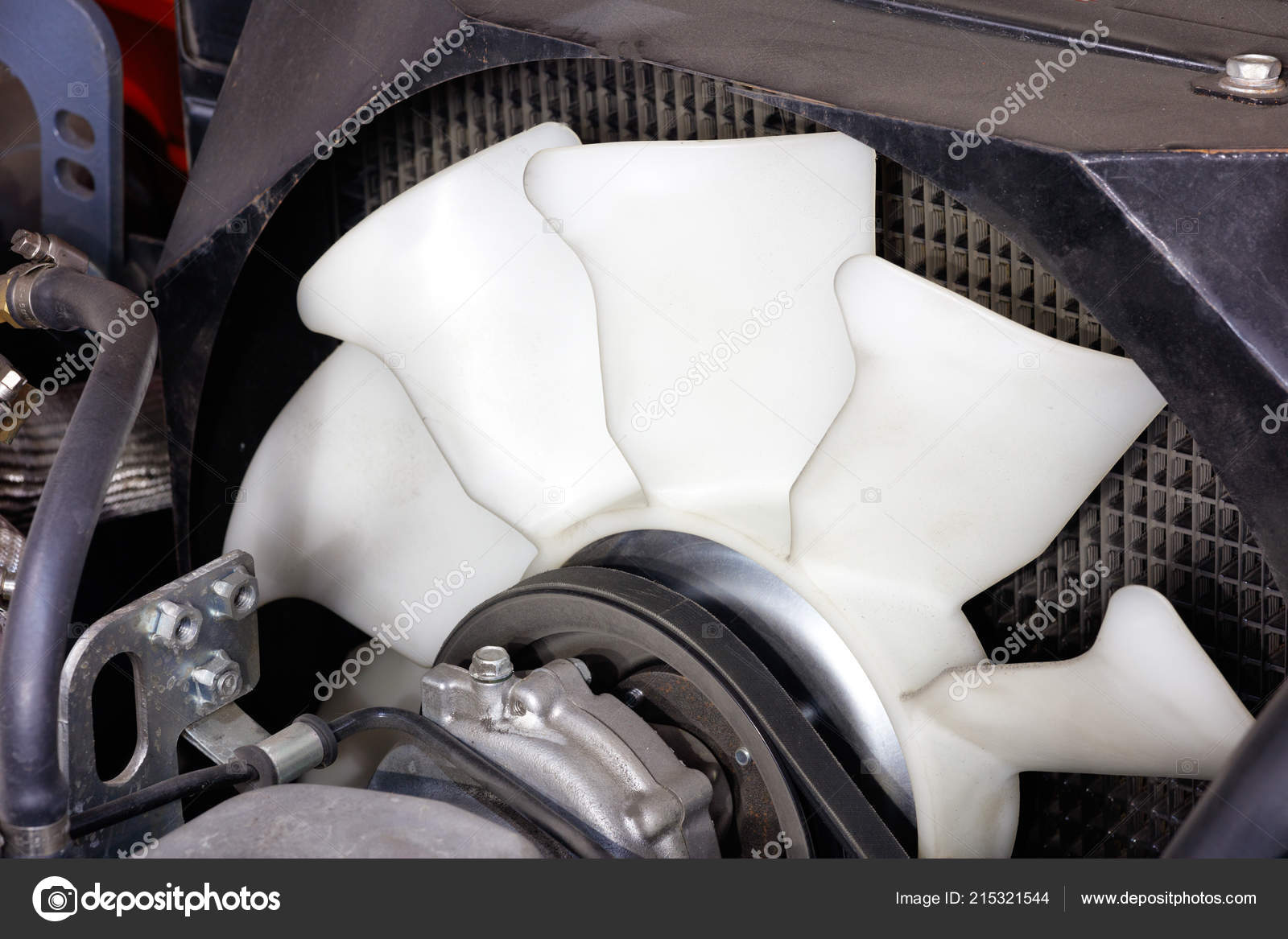
For those that ride in scorching climates, the bike’s cooling system cannot keep up with the heat, even under moderate loads.
Even riding on a hot day can overwhelm the cooling system no matter how new and high quality the coolant.
Some small or medium-sized ATVs don’t have a liquid cooling system with a radiator but are equipped with air-cooled engines.
An air-cooled engine needs airflow across the fins of the cylinder head to dissipate heat properly. When idling, especially in hot conditions, the engine may overheat simply from a lack of moving air across the engine surface.
It is recommended to stop an air-cooled ATV any time you expect idling for more than a minute or two.
Except for making sure the ATV is in good working order regarding the common types of issues listed above, here are a few tips on how you can prevent your ATV from overheating.
The number one thing you can do to prevent your ATV from overheating is to clean the radiator and radiator screen regularly.
Please refer to the step-by-step guide above to learn how to clean the bike’s cooling system properly without damaging it.
Replacing the coolant is often a neglected aspect of some people’s ATV maintenance schedule.
Use a tester every few months to make sure the coolant is healthy and has the right mixture. Change the fluid according to your manufacturer’s recommendations, usually every two to five years. A complete system flush usually takes less than an hour.
While most ATVs today come stock with radiator fans, it’s a great upgrade if your bike doesn’t have one.
If your bike has a mechanical fan, consider upgrading to an electrical one as it will not negatively impact horsepower or fuel economy as a mechanical fan does.
Some manufacturers offer aftermarket water pumps that provide a better capacity than the stock does. This may be an option to look into for those that need extreme cooling.
A tip commonly found on dune-racer forums uses a mix of a product called “Water Wetter” combined with distilled water. This mix is supposed to provide even better cooling than a regular 50/50 antifreeze/water mix. It even contains corrosion inhibitors and should be safe to use as long as you remember to replace it before the winter months hit.
Racers often run pure water or a mixture with little to no coolant. They do so to increase cooling since water transfers heat better than any coolant mix or because circuit rules prevent them from running with glycol-based coolant.
Water, however, has a lower boiling point than a water/antifreeze mix.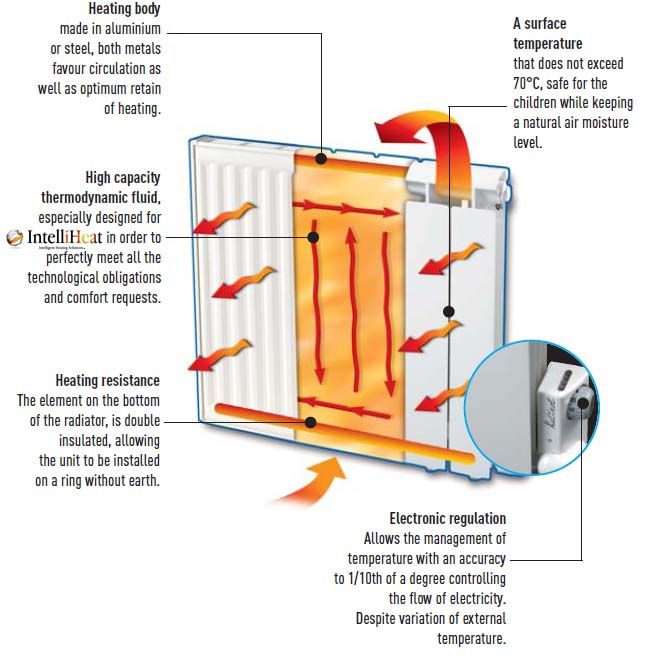 A high-pressure radiator cap is used to raise the boiling point and prevent the system from boiling.
A high-pressure radiator cap is used to raise the boiling point and prevent the system from boiling.
Note that a high-pressure radiator cap will not help to prevent overheating on a stock system.
Most ATV manufacturers recommend that you use a 50/50 antifreeze premix, while others suggest a 60/40 mix. You will never go wrong by using the type recommended by the manufacturer, but other quality brands will likely work just as well. Note that using another antifreeze than what the manufacturer recommends may void the warranty.
Make sure the coolant you choose is aluminum compatible. Also, make sure to use distilled water if you’re not using a premix. Using regular water may cause mineral deposits inside the engine and radiator over time.
You can use car coolant in an ATV as long as it is an ethylene-glycol based and aluminum compatible. However, it is recommended that you flush the system and add coolant according to manufacturer spec when possible.
ATVs use an aluminum compatible ethylene glycol-based coolant mix. Do not use propylene glycol or mix propylene glycol with ethylene glycol.
ATV engines typically run at 200F to 240F (93C to 115C) when measuring the oil temp.
Owning an ATV is a lot like owning a car – you have to keep up with the maintenance it needs to keep running smoothly. If your ATV isn’t regularly cleaned and inspected, any number of problems can pop up before or during your ride. One of the most common and bothersome of these problems is overheating.
If your ATV overheats, immediately shut it off and get it level. Then you’ll want to check your coolant level and see if you have a leak on your hands. If you’re seeing a lot of white smoke, that means coolant is burning in your engine. If not, there are various reasons it can be overheating.
In this article, we’ll be taking a deep dive into some of the most common causes for ATV overheating, as well as some general maintenance tips.
Engine overheating is a prevalent problem for both cars and ATVs alike. Before, during, and after your ride, there are numerous symptoms you can look for that can indicate your engine has an overheating problem.
A few symptoms of engine overheating are:
You can expect to see any one of these symptoms or several of them back-to-back. Burning coolant usually always coincides with white smoke issuing from the engine, and dripping liquid isn’t always noticeable unless you’re stationary.
Ideally, you want to shut off your bike immediately after losing any amount of power – that’s the only surefire solution to keep it from overheating further.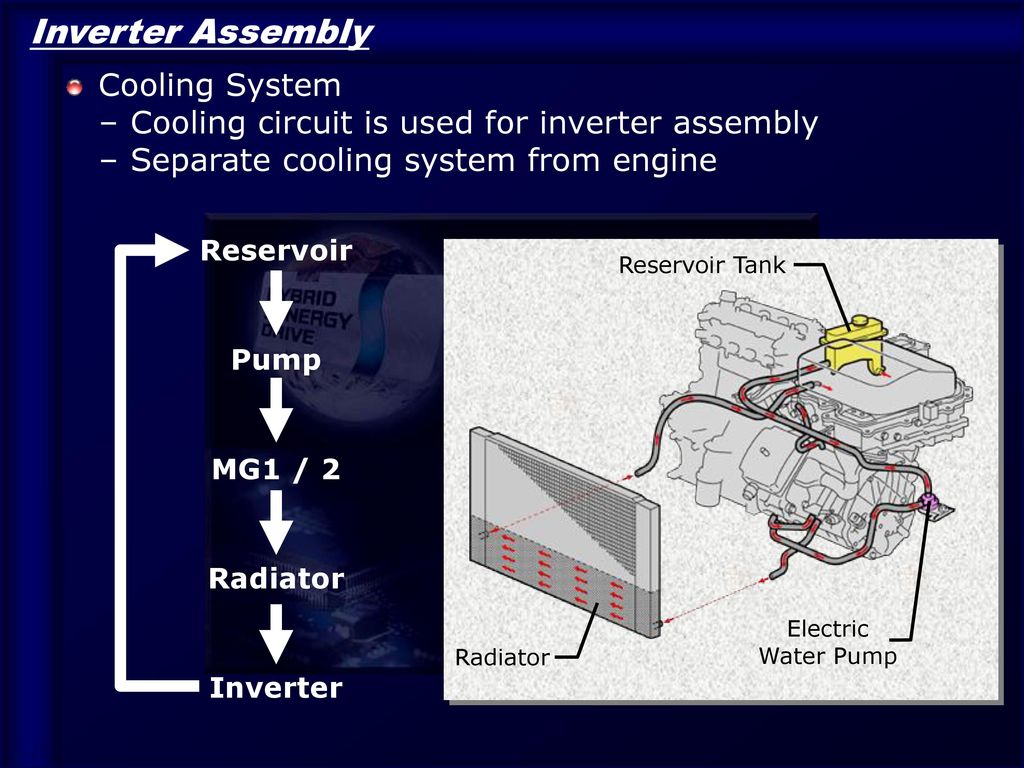
Here’s a video showing some tips on overheating:
After your bike is off, you’ll want to check your radiator for any defects such as deformities in your fins, then checking your coolant. If your coolant is very low or giving off a sweet smell, your engine has likely been burning coolant due to a leak.
You may also want to clean your radiator screen, as a dirty screen can help overheat the radiator.
Another common issue with the radiator is if it doesn’t have enough air around it. The radiator’s entire design uses liquid and air to dispose of engine heat, so naturally, you want to make sure that it isn’t obstructed by mud, plant matter, or other debris.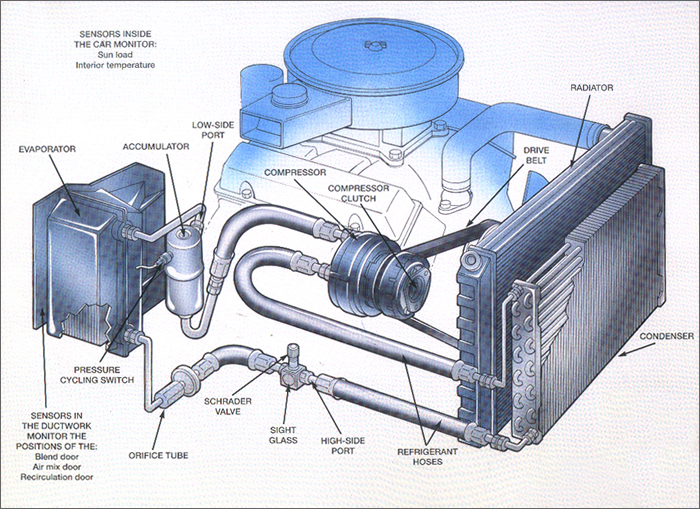
Without enough air coming into the radiator, it begins to burn the coolant and cause other damage to your ATV. It can become a very serious issue if you don’t address it quickly.
If your fan is running just a little hot and the engine feels a bit warm, that isn’t caused for alarm due to plumes of white smoke and the sweet smell of ethylene glycol (coolant).
If you’ve been working with engines for some time, you may know that thermostats are considered consumable items that only last a few years before getting stuck. If you weren’t aware of this, it’s a handy bit of knowledge that may help your ATV now or in the future.
Your thermostat is a heat-sensitive valve that lets coolant run through your cooling system to keep your ATV cool. Depending on the heat levels, the thermostat will allow a corresponding amount of coolant to keep the engine cool.
So when the thermostat becomes ‘stuck,’ it stops letting coolant flow through the system.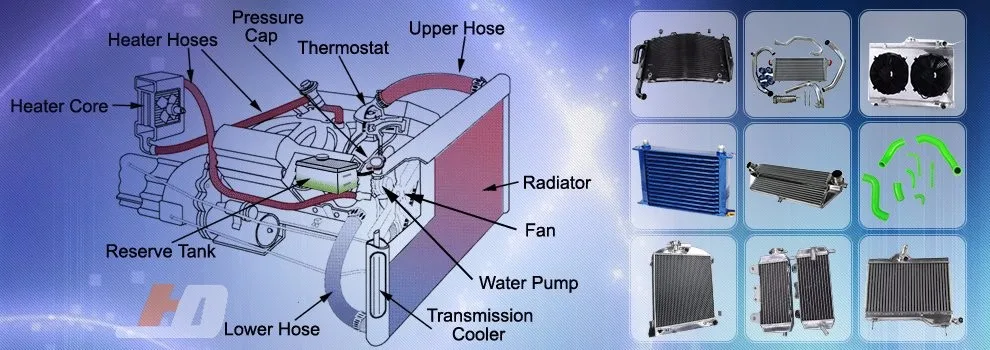 If this happens, you’ll have to buy a new thermostat and have that installed. Fortunately, it isn’t a tough fix.
If this happens, you’ll have to buy a new thermostat and have that installed. Fortunately, it isn’t a tough fix.
When your bike continually overheats and never has enough coolant in the radiator, no matter how much you put in, it’s likely you have a leak on your hands.
An ATV in healthy condition doesn’t use or burn coolant, so you shouldn’t have to perform this check more often than maybe once monthly. However, a leak makes this priority number one.
Possible locations of leaks include:
As you can see, there are numerous places a leak may be hiding and undermining the health of your quad. Luckily, you can almost always identify the location by carefully checking these areas for drips or moisture – the moisture may be coolant seeping out.
Coolant is designed to be added to your machine’s coolant system in specified amounts and mixtures. You should always ask your dealer what kind of coolant and how much your machine takes.
You should always ask your dealer what kind of coolant and how much your machine takes.
It’s very important to note that coolant can become degraded or contaminated over time, which will cause it to lose its effectiveness. You should always be on the lookout for overheating signs that may result from poor quality coolant that needs to be replaced.
General guidelines recommend that you completely flush your coolant system and replace it with fresh coolant every five years.
However, this may be necessary to do multiple times, especially if your system has a coolant leak or other overheating problem that can cause coolant to leak.
Coolant should generally always be added in a 50/50 or 60/40 mixture, and you can check your coolant quality periodically to ensure it’s performing as expected.
Radiators house fans that suck cool air into the radiator to keep it cool when your engine is operating. Ideally, the coolant system combined with the fan will keep your engine running smoothly. Sometimes, though, your radiator fan may not be working as it should.
Sometimes, though, your radiator fan may not be working as it should.
This can result from a faulty fan motor or, more commonly, the radiator fan sensor that tells the fan when to kick on and suck in the air. You can test the motor by itself with the battery – if it works hooked directly to the battery, then you have a sensor problem.
Less common than this is if your battery isn’t pulling the voltage, it needs to run the radiator fan. There won’t be anything wrong with the fan itself, but you’ll need to check your battery’s voltage with a multimeter and possibly replace it if it doesn’t charge.
Your coolant system’s water pump component works to distribute and regulate the flow of coolant that cools your engine while running. The water pump uses a set of hoses to pump coolant and back to the radiator, where the fan cools it.
In this case, you may have a problem as small as a loose or missing impeller nut or a more serious problem where your water pump needs to be replaced.
For that to be necessary, the pump would be corroded or worn to the point it’s ruined. Always consult a trusted mechanic when confronted with serious problems like this one.
Head gaskets keep coolant from entering the combustion chamber of your engine, so naturally, you want those suckers to remain intact.
Sometimes, for various reasons, the gasket can become worn or baked on. In that case, it will need to be scraped off and replaced.
You can spot a bad head gasket if you’re seeing a lot of white smoke coming from your exhaust that’s coolant burning in your engine. This will often be accompanied by a sweet smell – the smell is propylene glycol burning in your combustion chamber.
In this article, we’ve learned about a myriad number of symptoms and signs to be on the lookout for in your ATV.
If you take all the necessary precautions and perform regular checks and maintenance, you may never have a problem.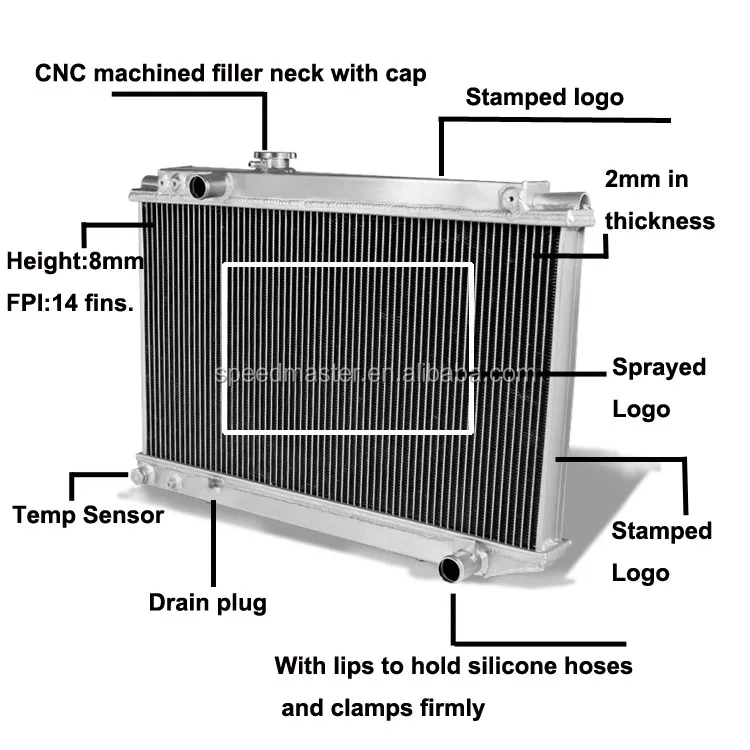 But if you do see any signs of overheating in your quad, you know exactly what to do to fix it.
But if you do see any signs of overheating in your quad, you know exactly what to do to fix it.
Sharing is caring!
Suspension. Shock absorbers must be free of oil, and CV boots must be free of holes through which moisture can enter. To check the condition of the wheel bearings and hub bushings, you need to raise the ATV with a jack and shake the wheels vertically and horizontally - if there is play, one of these parts is worn out. Most often these are bearings. You also need to check all the suspension arms for play - perhaps ball bearings or silent blocks need to be replaced.
ATV with working shock absorbers lowers and rises evenly - when pressing on the rear or front, one of the sides should not sag.
Transmission. Gearboxes must be free of oil leaks and cracks. The oil in them can be checked by lowering a plastic clamp into the filler neck or unscrewing the drain bolts: it’s bad if the liquid is opaque, it contains chips or other foreign particles. To check the modes of operation of the transmission, you need to jack up the front of the ATV. When all-wheel drive is on, when turning the left wheel, the right wheel should rotate in the opposite direction, and vice versa. When the differential lock is engaged, both wheels rotate in the same direction. Transfers should be included without effort and crunch.
To check the modes of operation of the transmission, you need to jack up the front of the ATV. When all-wheel drive is on, when turning the left wheel, the right wheel should rotate in the opposite direction, and vice versa. When the differential lock is engaged, both wheels rotate in the same direction. Transfers should be included without effort and crunch.
Engine. It must be free of oil. A serviceable motor starts in 2-3 seconds and works without a metallic rattle, an arbitrary increase and decrease in idle speed.
Bad sign - black oil or with foreign particles. Normally it is transparent.
A malfunction is also indicated by black, white or blue smoke from the exhaust pipe, as well as a burning smell. At idle, the exhaust gases of a serviceable ATV are almost transparent.
It is advisable to measure the compression in the cylinders - this will require a compression meter with adapters for different threads of the candles and knowledge of the normal compression value in the cylinders of a particular ATV model, taking into account the decompression meter.
Coolant . You need to check with a cold engine. The antifreeze level must be between the minimum mark "LOW" and the maximum "FULL". The liquid should not be cloudy. If there is sediment or dirty “flakes” under the radiator cap, the motor was poorly maintained and may have overheated.
Air filter . If there are oil stains on it, most likely the ATV turned over.
Electrical . It is necessary to check the operation of the parking lights, high and low beams, turn signals, alarms, horns, heating, winches. Error indicators - for example, an electric booster - should go out when the engine is started.
Electric power steering . With the ATV running and jacked up, turn the steering wheel left, right, then center. With a working electric power steering, the steering wheel does not turn on its own.
Frame. Cracks, extensive corrosion, welding spots, stripped or fresh paint in the places where the suspension arms are attached, on the arms themselves and on the bottom of the frame - a reason to refuse to buy.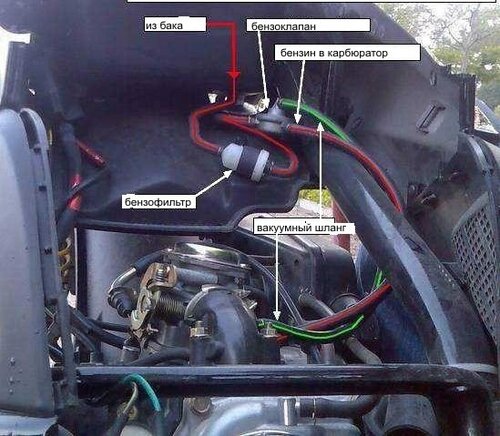 Cracks or welding in the cargo platform area are not critical.
Cracks or welding in the cargo platform area are not critical.
The difference in one or more bolts of the engine, variator or bridge, as well as traces of sealant on the crankcase connectors, indicates that the assembly was disassembled to fix the breakdown.
ATV in good working order does not pull to one side. When moving back and forth with the wheels fully inverted, there is no cod. The start of movement and acceleration without jerks and bumps. When you turn on the four-wheel drive and differential lock, it becomes more difficult to turn the steering wheel.
The cooling radiator is the main element of the engine cooling system. The operation of a cooling radiator is the active transfer of heat to the atmosphere from a heated coolant. This process is important for the efficient operation of the engine, because. coolant, before giving off heat in the radiator, this heat is taken from heated engine components and parts. So it was originally conceived by the designers, but life makes its own adjustments to the operation of the car on the road.
So it was originally conceived by the designers, but life makes its own adjustments to the operation of the car on the road.
The situation when the arrow on the tidy starts treacherously creeping up, and, unfortunately, this arrow is not an indicator of the fuel level, but an indicator of the coolant temperature, modestly indicating the beginning of overheating of the car. Steam is pouring from under the hood, and a liquid spot from the coolant is slowly but surely spreading on the pavement. The radiator is leaking, what should I do?
Before doing anything, you need to figure out what led to this result. This may be external damage from stones, or the plastic elements of the radiator may crack as a result of impact in a minor accident. These minor lesions are usually not immediately identifiable and develop into problems over time. In the meantime, the driver continues to operate the car, gradually, drop by drop, losing coolant from the system.
As the coolant level drops, the risk of engine overheating increases, which in turn can lead to the following problems:
Deformation of the plane of the cylinder block or cylinder head
Engine jamming
Cylinder head gasket deformation
Reconfiguration of the cooling system and incidental failure of system components
All of these cases will lead to costly repairs.
The first rule in this case is to monitor the coolant level. In fact, periodically checking the technical fluids of the car before the trip is a good rule, this will help to notice the emerging problem in a timely manner and eliminate it.
Even if the cooling radiator leak is small, do not underestimate the magnitude of the situation.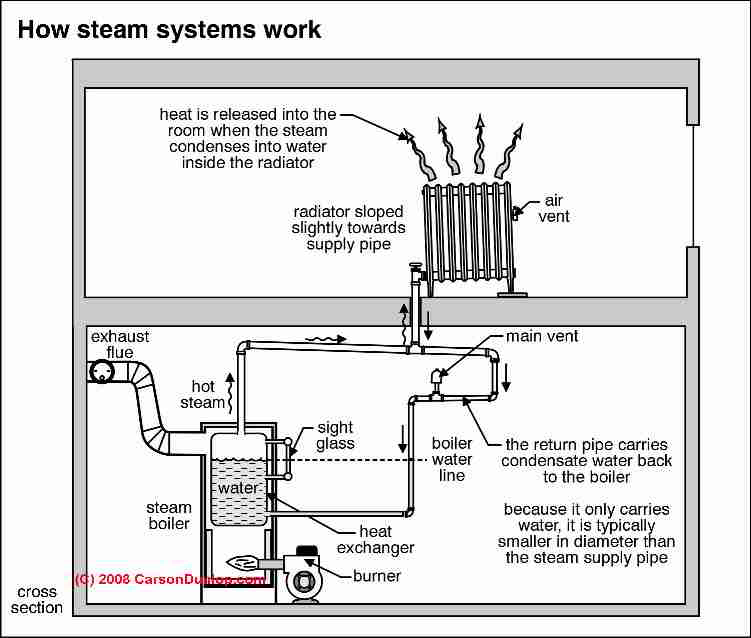 Over time, the radiator leak will increase, and this moment can be overlooked. The driver will not like the result.
Over time, the radiator leak will increase, and this moment can be overlooked. The driver will not like the result.
Therefore, in the event of such a situation, it is necessary to have a supply of coolant or distilled water. Yes, if the loss of coolant is small, then distilled water can be used for the first time, but be aware that the more distilled water gets into the system, the more we will increase the freezing point of the coolant. Therefore, if winter is overboard, you should not get carried away with distilled water, but add coolant.
In case of serious damage to the engine cooling system, repair is inevitable, the operation of the car in this case is highly undesirable. And in order not to get to the repair of the engine, the car should be moved to the technical center by means of a tow truck, in extreme cases, on a cable.
If the design of the radiator allows, then you can use a heat-resistant adhesive sealant, better known as cold welding.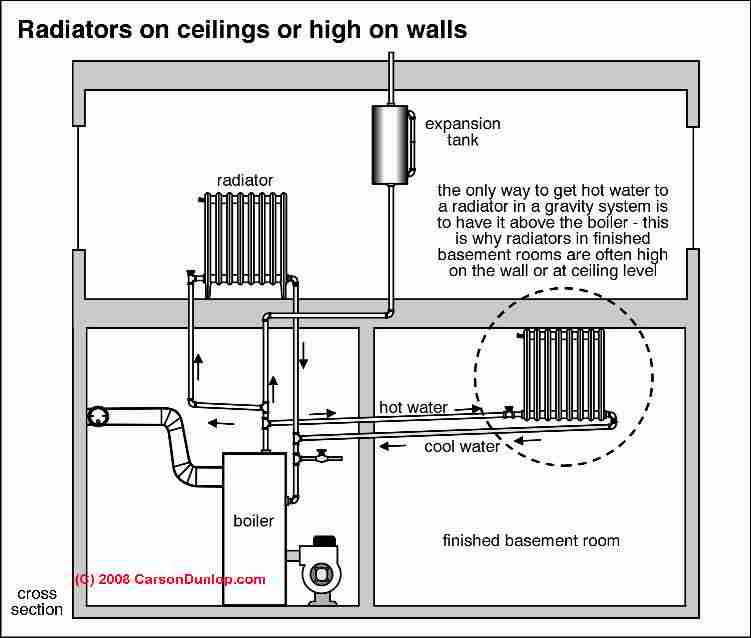 In some cases, you will need to remove the radiator from the car.
In some cases, you will need to remove the radiator from the car.
Cold Weld is a special two-component sealant that may contain metal chips. Such sealants allow you to quickly restore plastic or metal parts.
The gluing process itself is not complicated:
· Before applying the sealant, the surface must be prepared, cleaned and degreased.
· Prepare the sealant for use by mixing the two components. The components must be thoroughly mixed to obtain a homogeneous mass.
The sealant is applied to the part.
The compound will set in 3-5 minutes, but it will take from an hour to a day to fully cure, depending on the compound.
If the radiator leak is formed on the aluminum part, then sealing is possible. The process is complicated, and we would recommend entrusting it to professionals, because. If you fail, you will have to redo everything again.
· You will need a powerful soldering iron and the ego must be well warmed up before work.
The radiator walls will also need to be thoroughly warmed up.
· Thoroughly clean the surface before soldering.
· To ensure a good soldering quality, a solder with a high tin content must be used.
This method will require the removal of the radiator from the car, which means that when installing the radiator back after repair, it is advisable to completely replace the coolant.
There is another way to fix a radiator leak that does not require partial or complete disassembly of the system. It's a sealant which works inside the cooling system. For example, Liqui Moly - Kuhler-Dichter Cooling System Sealant. This tool seals small leaks in the radiator, the porosity of the metal at the soldering points, hairline cracks. Seals damage that is rather difficult to localize (determined only by a drop in the coolant level). You can use the product with all types of additives in the cooling system and any antifreeze. Suitable for all cooling and heating systems.
You can use the product with all types of additives in the cooling system and any antifreeze. Suitable for all cooling and heating systems.
Contains water-soluble monomer and plastic chips suspended in a monoethylene glycol solution. With a pressure drop and with the access of oxygen, the polymerization reaction is activated and the polymerization products seal the leaks of the coolant.
Application of sealant very simple:
· Shake the bottle before use.
· Add sealant to the cooling system at the rate of 250 ml. additives per 10 liters. coolant.
Let the engine idle or drive the vehicle for at least 10 minutes
sealant can be in the cooling system for the entire life of the coolant.
To avoid major repairs, you should regularly check the cooling system for the slightest malfunctions and leaks, change hoses and pipes in a timely manner, and monitor the temperature of the antifreeze during operation.